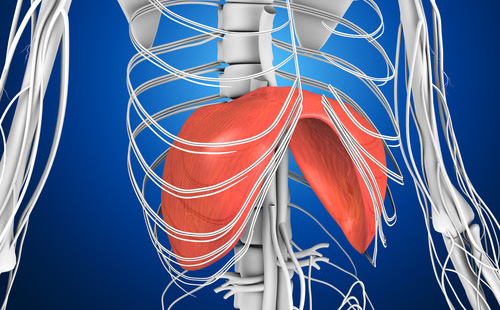More Reasons the Diaphragm is Key to Your Pains, Fatigue, and more…😳
Insights to the many ways your diaphragm should support you …
The diaphragm affects everything!
When I teach Bridging® we spend a lot of time discussing diaphragm connections and function, as well as the events in a person’s background which likely impact diaphragm function.
This is why:
“The diaphragm affects everything in the body, AND everything in the body affects the diaphragm.”
In addition to the role the diaphragm plays with breathing, there are two other jobs the diaphragm has — one is structural and the other is mechanical. (Yep, here is where my engineering background comes in handy!)
The good news is diaphragm function can change quickly with Bridging®. The best part is that there are no daily exercises needed to retain the changes–breathing is the only exercise needed to keep it all working better.
Here are some of the lesser known diaphragm functions and why they can create so much havoc when they get off track.
Structural function involving the diaphragm
- Rounded shoulders and tight pectoral muscles? Structurally the diaphragm links the ribs together. When ribs move along with the diaphragm the muscles connecting the shoulder and arm also move easily. Tight or rounded shoulders are typically signs of tight ribs due to poor diaphragm function. Bridging® support to diaphragm function allows the shoulders to relax and straighten up as part of the process.
- Stress in the legs and low back? Linking the legs to the core is another structural job of the diaphragm. The hip flexor muscles (psoas) and diaphragm anchoring attachments intersect in the lumbar spine. When the diaphragm is not working well, the psoas muscle tends to be tight. The tight hip flexor causes stress in the legs and low back. This also inhibits smooth, efficient movement, and balance control. Bridging® to support the diaphragm almost immediately improves the hips and lower back.
Mechanical / metabolic function involving the diaphragm
- Digestion issues? The diaphragm acts like a piston moving up and down with each breath. This movement creates a syringe-like push and pull between the chest and abdomen. Mechanically, the motion helps with digestive functions by providing a little push with each of our million breaths a day. Bridging® support to the diaphragm helps to regulate your digestive system.
- Metabolic energy use and cell clearing concerns? The push-pull creates a rhythmic wave of pressure similar to the waves at the ocean. This pressure variation is required by every single cell in the body to take nutrition in and expel waste products out. The health of every cell in the body depends on the diaphragm creating this movement. Bridging® support to diaphragm function also results in better biological cell health.
Our clients are always surprised that so many other aspects of their physical being change after Bridging®. In reality, many of these changes are courtesy of the diaphragm. When the diaphragm works better, we are healthier!
There is also a calming aspect to the diaphragm structure and mechanics. We’ll save that for next time.
How does Bridging® help?
When your diaphragm is out of synch you really need a reset.
Bridging® is able to quickly reset the coordination of the core and diaphragm muscles allowing your body to get back to the way it is supposed to work. Your shoulders, low back and hips will thank you!
Wondering if Bridging® can help your diaphragm?
Drop me some background info and I’ll tell you if, and how Bridging® can help.

